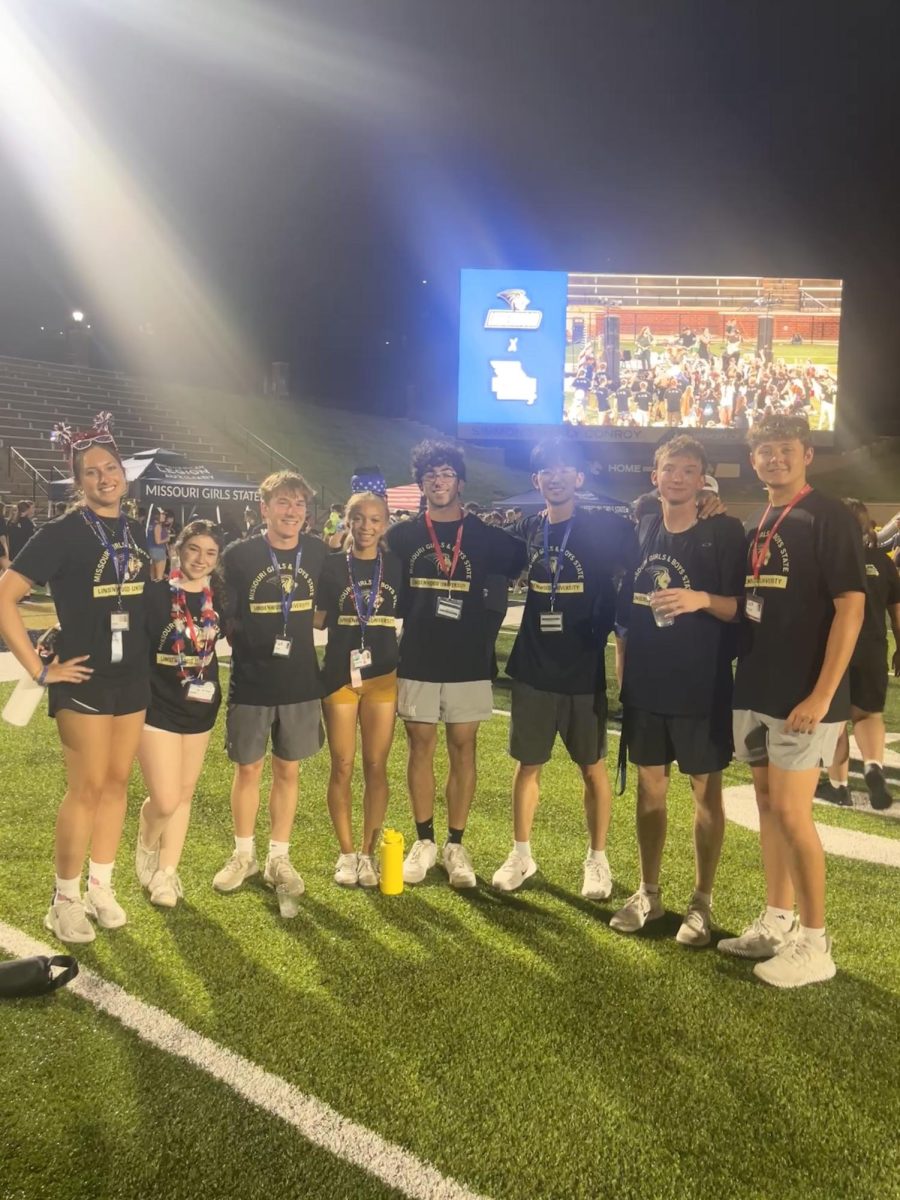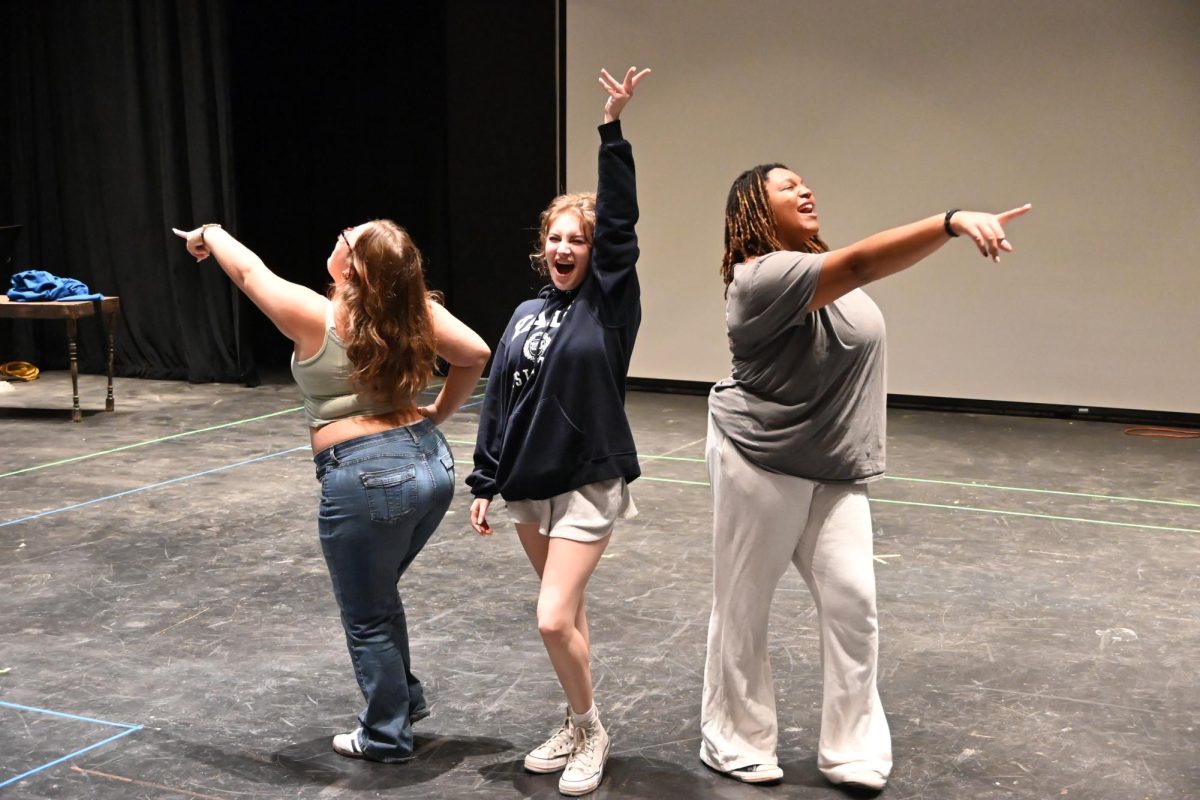School security has been placed under a microscope due to several nationally covered tragedies, such as the shooting at Sandy Hook Elementary. With three school shootings already occurring nationally in 2015, Parkway administrators are addressing our practices for dealing with a potential threat.
What has been done?
As the nation’s attention on school security remains prevalent, Parkway has made efforts to fortify its own security.
Five days before school started, adults district-wide underwent a training workshop to help ensure school safety and teach the skills of what to do should a security threat develop.
“Parkway continues to be in a transition phase from what we did last year,” principal Tim McCarthy said. “This year, all of the staff members were trained in a new approach to an intruder, which is the four E’s approach.”
The four ‘E’s in which Parkway’s security revolves around are education, evacuation, engagement and evasion. Every teacher in the district, from elementary schools to high schools, was taught this system at the beginning of the year.
“I think as a district that was the first step,” McCarthy said. “Then, we continue to have conversations about the best way to take that training to students.”
Despite the enhanced training for staff prior to the school year, there was nothing done to educate students in regards to security training.
“There were plans to teach students the same things we taught teachers or at least give them an update on how we expect you to react,” School Resource Officer Mark Caswell said. “But I haven’t heard that come out yet.”
Fred Crawford, Parkway’s Chief of Security, believes that currently, each and every Parkway school is equally prepared for a security threat.
“I finished my 30 school audit,” Crawford said. “And many reviews of the intruder drills convinced me that they are prepared the best they can be. Right now, I believe we are best prepared to handle an intruder incident.”
Crawford, who has been in his position for 17 years, is in charge of more than 10 school resource officers, one at each high and middle school. Also, he has a security staff of eight that monitor the schools for vandalism and trespassers, fire alarms and burglar alarms 24 hours a day, each day of the year.
The bill that was passed in November, Proposition S, granted $95 million to Parkway in order for the district to improve its buildings. Some of those funds go toward security improvements.
One example of security improvements involve altering the locks on all of the doors, making them able to lock from both sides.
In the past, Caswell has yet to deal with any threat related to weapons.
“The only thing in two years I’ve seen are physical altercations,” Caswell said. “We had a incident this year where there was a post on social media that caused some concern. It wasn’t a direct threat, however.”
Students participated in one intruder drill early in the school year, and are required to undergo at least one more this semester, according to district policy.
“The more drills we participate in, the safer our students and staff will feel about a situation,” Crawford said.
Mindset
One important part of the learning process is the environment that the learning takes place in, and security measures are one of the aspects that go into creating that proper environment.
“I define school security as a safe learning environment where a student should not be afraid of getting emotionally or physically hurt by a peer, a teacher or a stranger,” senior Ben Stein said.
There is work that goes into creating an environment where people feel protected on a daily basis.
“Security is the measures in place to ensure safety,” business teacher Cassandra Maloney said. “That includes the doors being locked, teachers and administrators constantly being around the building and having an officer here adds to that.”
Administrators and other decision makers have put measures in place, many people feel safe in school.
“I don’t ever feel at danger at school,” physical education teacher Mike Wright said. “We have a lot of good safety measures. I have never felt unsafe here at all. We are as prepared as you can be.”
Many students see the security in a similar state of mind.
“I don’t think that there has ever been a time when I felt unsafe at school,” Stein said. “I feel as though the staff is pretty good at staying on top of what’s going on, and I also don’t go very long throughout the day without seeing a police officer.”
Maloney acknowledges that people do think about the threat of an intruder, but only in certain situations.
“It’s not an everyday thought,” Maloney said. “It comes up when there is something that happens in the news or when we have some training or something that brings our awareness back to it, like a propped-open door.”
This security can be beneficial to the learning process. However, the daily security measures can, in some cases, allow some to forget the importance of safety issues.
“I don’t think people realize the possibility of something happening at school because nothing has really happened here or around us so people probably don’t see it as a real possibility,” senior Yang Song said.
While Song feels that students are not very aware of the potential threat, McCarthy doesn’t see this necessarily as a problem.
“Do I want students to constantly think about this?” McCarthy said. “No. The fact that they are not, would you label that as naive? No, I wouldn’t necessarily label it that way.”
While students’ and adults’ mindset about school security constantly changes, the questions of how to improve remain.
Moving forward
Though the thought of a safety threat at school might seem unlikely to some, it has become imperative that schools put a plan in place to protect their community and, more importantly, continue to improve upon that plan.
“When you think of a building this size, if there was an incident in the front of the building, why should the back of the building shelter in place, when the best approach, or the safest next step would be for the teacher working with students to exit the building, and evacuate the premises,” McCarthy said.
Stein agrees with McCarthy’s perspective, but continues to offer an additional solution.
“I know certain teachers with windows in their rooms have told me that they would get the students out through the windows and I agree with that line of reasoning,” Stein said. “The only way to really improve school security is to hire more security personnel.”
Hiring more police officers for security can become costly, so help needs to come from other sources as well.
“Everybody has to play their part in keeping the school safe because, if we don’t hear about what’s going on with you guys, on campus or off, then we can’t act appropriately and cut something off before it happens,” Caswell said.
Caswell attests that, without help from students, a threat could go unnoticed and slip by security. He says that students have the most insight. Gossip travels around school and peers are most likely to know first when someone is planning to cause harm.
“You don’t have to be a tattletale but when you see concerning behavior that might lead to dangerous activity then we want to know about it,” Caswell said.
Caswell pushes to prepare for the possibility of a threat by continuing to improve on how to combat the threats.
“We have all discussed the potential for additional training to continue to practice some skills be thinking of if something should happen so maybe some more training here and there could keep it on top of mind,” Maloney said.




